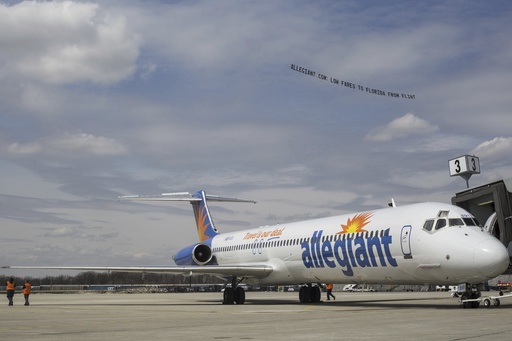
Delta and United Airlines have emerged as the most lucrative airlines in the United States by primarily appealing to high-end travelers while also successfully attracting a significant number of budget-conscious passengers. This trend has put pressure on smaller low-cost carriers, leading to the recent bankruptcy filing by Spirit Airlines. Many analysts suggest that Spirit’s difficulties may result in fewer options and increased prices for travelers seeking lower fares.
Although some budget airlines maintain a healthier financial status than Spirit, they are still struggling compared to major carriers in the ongoing recovery from the COVID-19 pandemic. Many experts believe that while Spirit shrinks, airlines like Frontier will capitalize on the market and continue to provide sufficient competition to keep prices from skyrocketing.
Since 2020, Spirit has reported losses exceeding $2.2 billion. Frontier last posted a full-year profit in 2019, although a turnaround may be on the horizon this year. Meanwhile, Allegiant Air’s parent company remains profitable but at diminished levels since the pandemic hit. In light of these statistics, United’s CEO Scott Kirby has criticized low-cost carriers for having a “flawed business model,” suggesting that many customers disdain the experience of flying with them.
Despite Kirby’s strong statements, industry analysts express concern over the immediate outlook for budget airlines, which typically offer cheaper base fares but impose numerous additional fees compared to larger airlines.
The challenges facing low-cost carriers have roots in their rapid expansion over the last two decades, which was fueled by competitive ticket pricing and lower operational costs, in part by employing workers at a lower pay scale compared to bigger counterparts like Delta and American Airlines. However, rising wage levels across the sector in the past two years have diminished that cost edge. Additionally, larger airlines have developed and improved their “basic economy” offerings to compete with budget airlines for price-sensitive passengers.
Low-cost carriers have also seen decreased operational efficiency, having accumulated more aircraft and personnel than needed as growth slowed. In 2019, Spirit’s flights were airborne for an average of 12.3 hours daily, but that figure increased by two hours for grounded times this summer, directly impacting their earnings. Costs for Spirit have escalated significantly, with expenses rising 32% per mile from 2019 to 2023.
An overabundance of flights exacerbated the challenges as well, with both budget and full-service airlines adding more domestic routes to compensate for a decline in business travel. This led to an oversupply of seats on popular routes, driving ticket prices down significantly, particularly for economy fares.
Airline analyst Tom Fitzgerald notes that larger carriers have successfully refined basic-economy offerings and are now reaping benefits from the growing demand for premium travel options post-COVID. He states that travelers appear more willing to spend substantially for an enhanced travel experience, and established airlines have ramped up their ability to meet that demand with offerings like premium economy and first-class seating.
In response, low-cost carriers are adjusting their strategies by shifting their focus towards premium offerings. For instance, Frontier Airlines restructured its fare categories to include more perks for higher-priced tickets, while Spirit recently implemented changes that added costs for seat choice preferences.
JetBlue Airways, which began as a low-cost airline with a focus on customer amenities, is re-evaluating its operations under new leadership. The airline is cutting back on less profitable routes and optimizing its core markets while postponing new aircraft deliveries.
Southwest Airlines is also making significant changes, announcing it will abandon its long-standing “open seating” policy to offer assigned seating upon boarding—a choice driven by survey results indicating that a majority of customers prefer this option, particularly among business travelers.
Increased demand for premium services may correlate with a sharp rise in wealth among affluent households, as recent data suggests that the top ZIP codes in income have accumulated a staggering $35 trillion since 2019. This economic shift leaves wealthier travelers with greater financial flexibility to opt for premium travel experiences, while the general overcrowding on flights may further drive passengers to seek alternatives to uncomfortable seating.
Meanwhile, Delta anticipates that revenues from premium ticket sales will surpass those from main-cabin tickets by 2027.
Globally, low-cost carriers have rebounded effectively from the pandemic, unlike their U.S. counterparts. Experts highlight that budget airlines overseas have historically attracted more diverse passenger demographics, whereas in the U.S., budgeting travelers often exhibit stigma towards low-cost airlines.
Delta’s CEO Ed Bastian acknowledges the viability of budget airlines despite current challenges, expressing confidence that there will always be a market for lower-cost travel options. He believes that while Delta has targeted upscale travelers, they also recognize the importance of providing basic-economy fares to compete effectively in the market. Bastian emphasizes that distinguishing between promoting an image as a premium airline and actually delivering a premium experience is essential for attracting and retaining customers.
